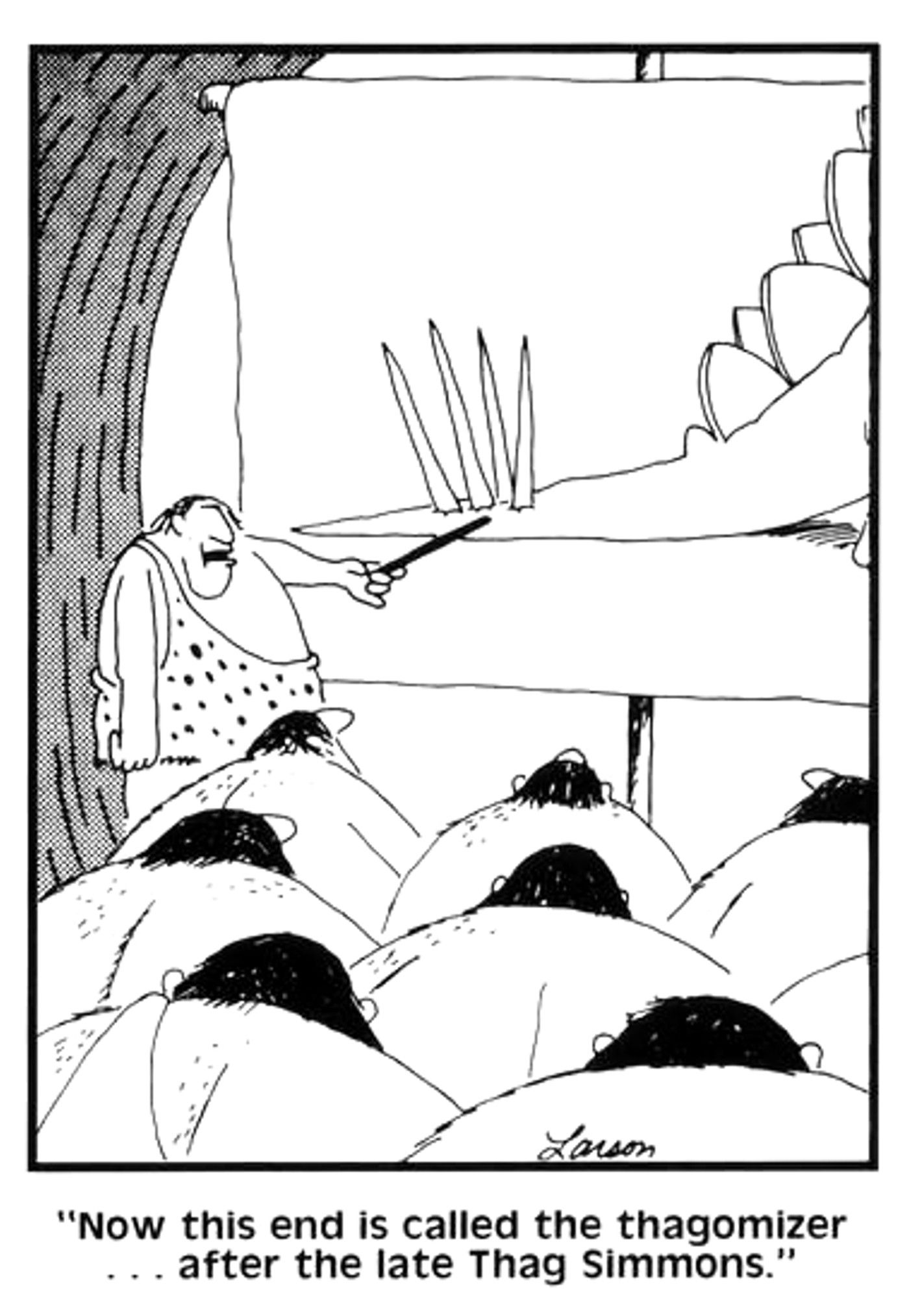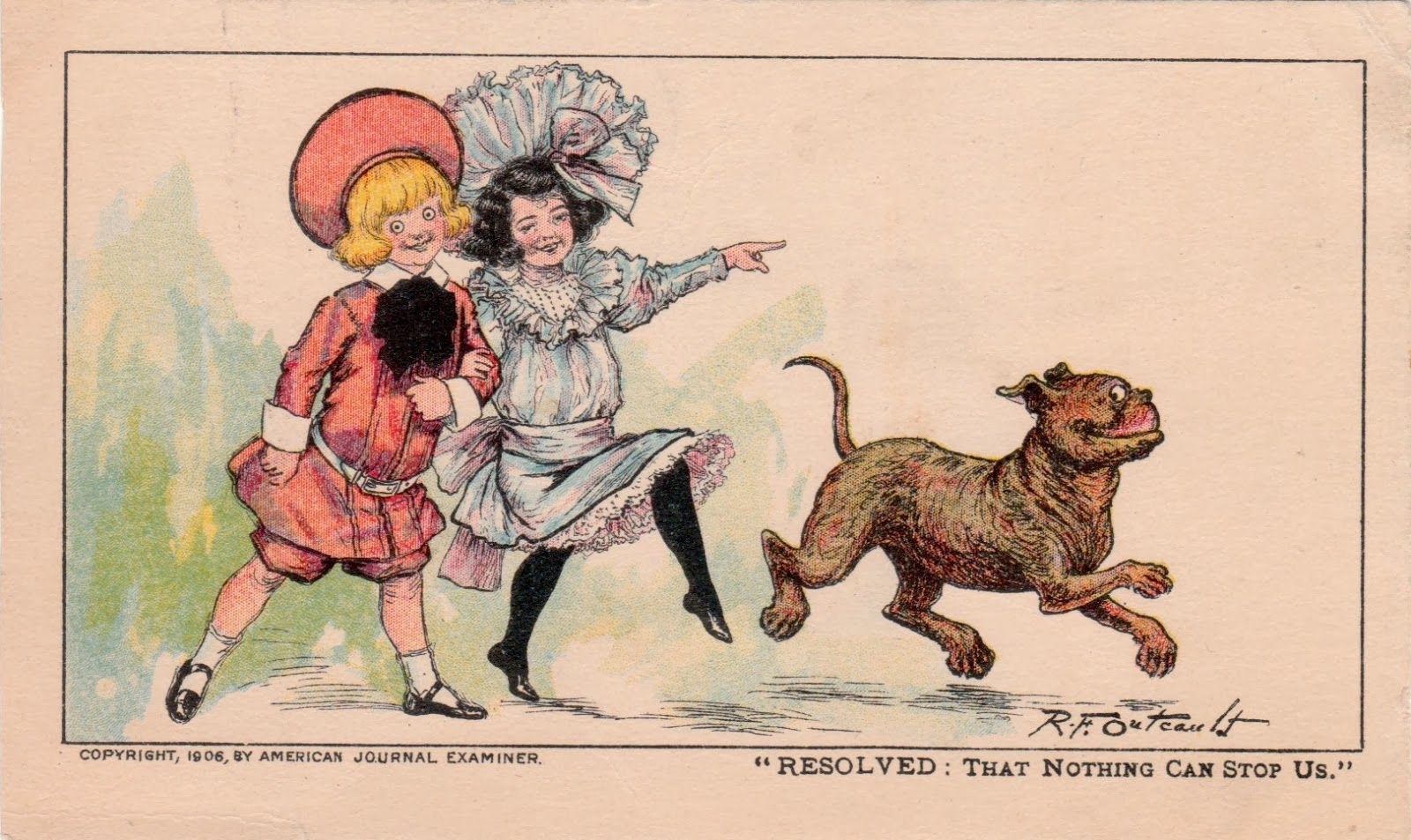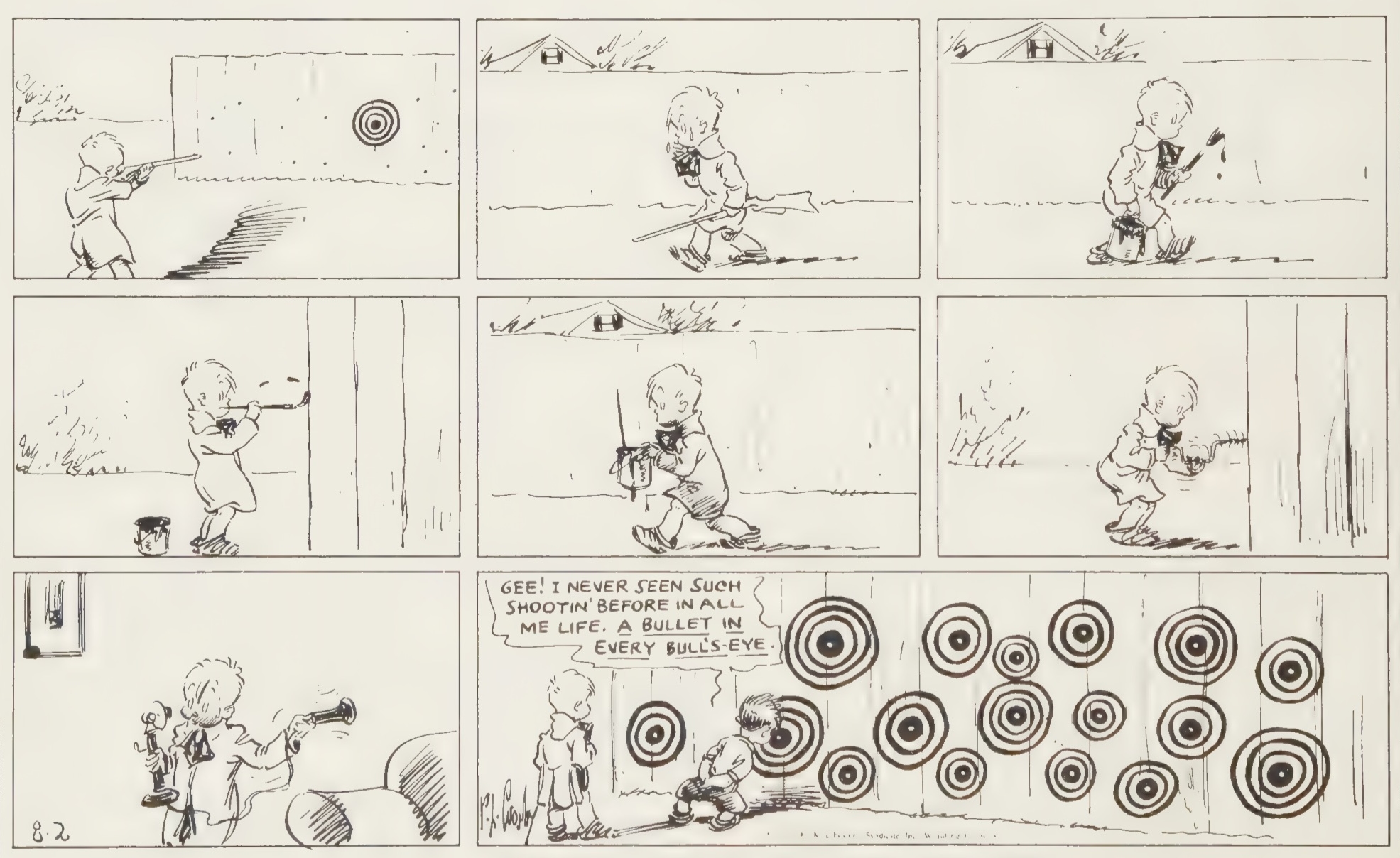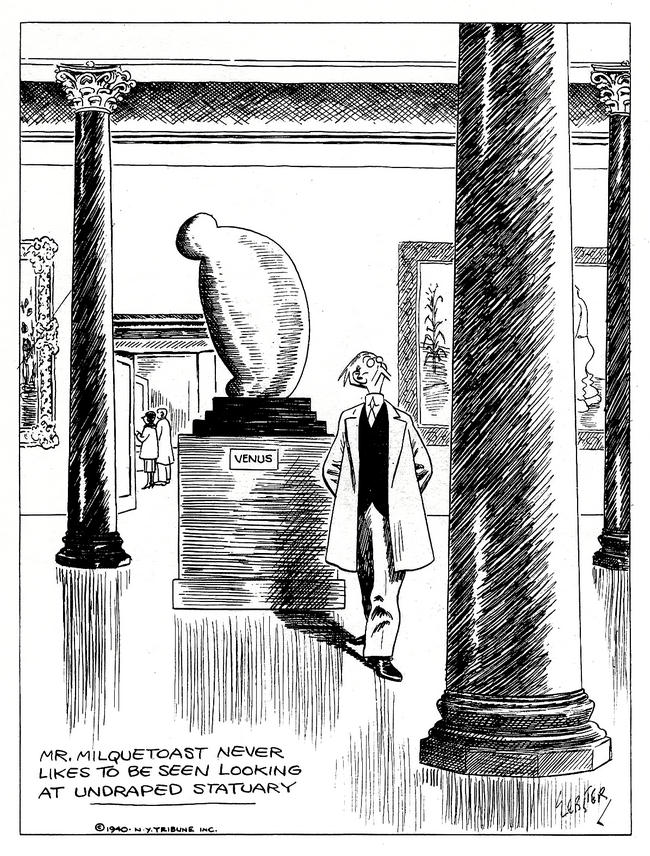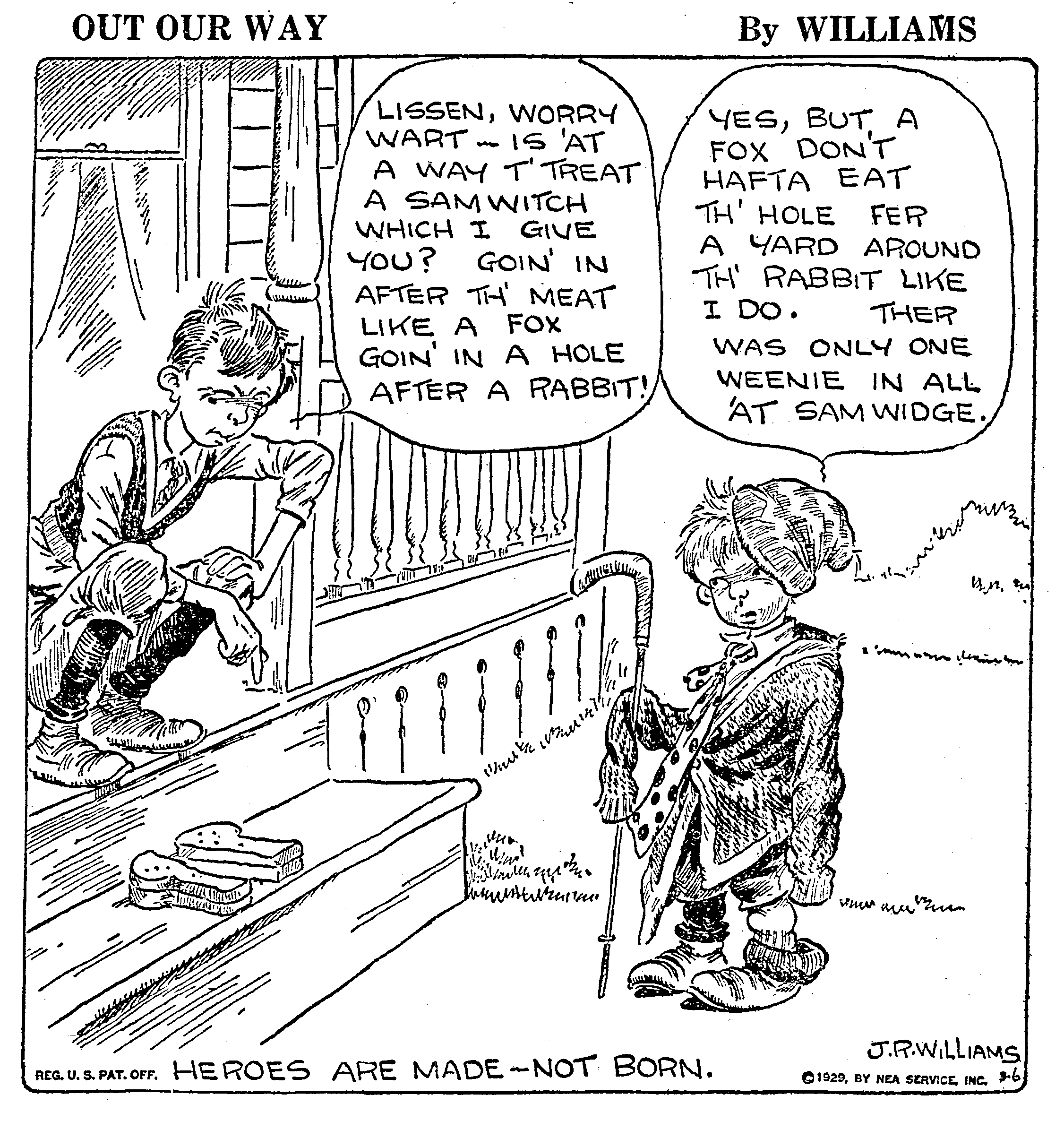As with most things I do research on, this one turned out to be more complicated than I thought it would.
Gary Larson is the cartoonist behind the very successful single panel comic The Far Side. The panel was syndicated in newspapers from 1980 to 1995, and some newer material appeared on the official website between 2020 and 2023. The humor is often described as "off the wall" and "surreal," though many times it can be incredibly relatable. Many of the jokes involve animals, and Larson was especially fond of using insects and prehistoric animals to tell his jokes. He also often used cavemen along with the prehistoric animals, which is of course historically inaccurate, but when the joke is funny enough it can be forgiven. That said, despite the historical inaccuracy, Larson has been praised by biologists for his attention to detail when it came to drawing the animals, especially the insects, and has gained a following among paleontologists from his many depictions of dinosaurs. In fact, he has amassed quite a following over the years in the scientific community at large, despite never being a part of it himself.
However, this is not to say that he was recognized by scientists immediately, or is enjoyed by all scientists equally, as will be shown.
On May 27, 1982, Larson published a comic depicting a group of cavemen attentively watching a presentation given by another caveman on the anatomy of the Stegosaurus. The caveman in the front points to an image of the Stegosaurus and says, "Now, this end is called the thagomizer... after the late Thag Simmons," indicating the spikes on the end of the tail. This also implies that said Thag had an unfortunate encounter with the tail spikes of the Stegosaurus, and the cavemen had named them in his honor. For many years this was just a joke, probably enjoyed by a majority of readers, and a contingent of paleontologists, but still simply a joke and nothing more. It would remain so for a little over 10 years, until a certain paleontologist decided to take the joke a bit further.
In September of 1993, at the Fifty-Third annual meeting of the Society of Vertebrate Paleontology, Kenneth Carpenter gave a presentation on a stegosaurus skeleton that had, at that time, been recently discovered. Up to that point, there were theories about what the tail spikes would have been used for, among them the idea that they were used for defense against predators, but there was no fossil evidence to back any of them up. At this meeting, however, Carpenter suggested that the particular stegosaurus skeleton on display showed evidence that the tail spikes had been used as a defensive weapon against a predator, as one of the spikes had been broken off. Carpenter also remembered the Far Side cartoon, which suggested a stegosaurus had used its tail spikes as a weapon against Thag, so he dubbed them "thagomizer" in honor of Larson. While this was not conclusive evidence of the nature of the usage of the thagomizer, later discoveries, including that of an allosaurus skeleton with a thagomizer spike embedded in it, led much more credence to this idea.
Following Carpenter's lead, other paleontologists began using the term in professional settings, and over the years it has been used in more and more places. Though it never became an official term for the Stegosaurus tail spikes, it is currently in use by the Smithsonian Museum of Natural History in Washington, DC, the Dinosaur National Monument in Colorado, and even in the exhaustive dinosaur reference book "The Complete Dinosaur."
That said, not everyone in the paleontology community embraced this term quite as readily. In fact, there are some who are actively against it.
A perusal of the Internet will reveal that many people mistakenly believe that "thagomizer" is the official term for the stegosaurus tail spikes, which it unfortunately is not. There are those, mostly stegosaurus researchers, who take great pleasure in pointing out that not only is this not true, but that such an "official term" doesn't exist. Dr. David Hone said as much in a reply to a Reddit post about the origin of the word, and went on to say that "most paleontologists don't use it," though when presented with contrary evidence he did go on to admit that many do. Dr. Susannah Maidment, in a profile of her on the website for Utah's Natural History Museum, says that she doesn't use the term because "paleontology already has more than enough jargon," and that simply using the phrase "tail spikes" will do. In fact, in a reply to a Twitter thread about the origin of the word, Dr. Maidment stated that not only is it not a word used by paleontologists, but "No self-respecting palaeontologist has ever used the word." Later tweets in the thread suggest that Dr. Maidment may also have asked those who publish papers on stegosaurs to remove the word from them before publishing. It seems she had also stated that there were no peer-reviewed published papers that had used the word, but it's unclear whether no one had, or that no one had been allowed to.
Whatever the case, it's clearly a very popular word among non-professional dinosaur enthusiasts, as well as those of a more professional persuasion. So, while Larson can't be credited with coining an official term, coining a popular colloquialism is still notable. Personally, I'm a fan, and I think fun words like thagomizer should be more common in science. If someone has an issue with "thagomizer," I would suggest looking up the origin of the word "quark."
That's not the only way that the scientific community has shown their appreciation for Gary Larson, either. Biologist Dale Clayton, when he discovered a new species of owl louse, named it Strigiphilus garylarsoni, "in appreciation of the unique light [Larson] has shed on the workings of nature." Also, in 1991, Kurt Johnson named a species of butterfly after Larson, Serratoterga larsoni, though the species was later merged with another one and the genus name was changed. This does mean that the louse is the only one that stuck, but of having a louse named after him, Larson has said, "I considered this an extreme honor. Besides, I knew no one was going to write and ask to name a new species of swan after me. You have to grab these opportunities when they come along."
For more information:
Watch Out For That Thagomizer! at Smithsonian Magazine
Gary Larson profile at Salon.com
Thagomizer in The Complete Dinosaur at Google Books
David Hone refuting the official-ness of the word on Reddit
Dr. Susannah Maidment profile at Natural History Museum of Utah
Susannah Maidment replies to a tweet about the Thagomizer on Twitter
